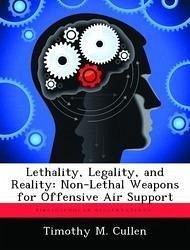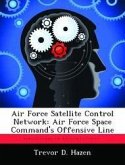This study evaluates the potential for non-lethal weapons to become viable tools for the air support of ground forces in military conflicts. During the Cold War, the US Air Force developed conventional air-support aircraft and munitions to fight Soviet mechanized infantry and armor in the central plains of Europe. Since the end of the Cold War, the United States increasingly confronts adversaries in situations where it is not in the national interest to use destructive force. In response to this new security environment, the Department of Defense has established the Joint Non-Lethal Weapons Program and deployed a myriad of non-lethal devices to conflicts around the world. All non-lethal weapons in the US armed forces, however, are ground weapons and are severely limited in range. Aircraft could provide the perspective and added range joint force commanders desire; thus, this thesis explores the potential for aircraft to provide non-lethal force options. Many factors contribute to the viability and acceptance of non-lethal weapons for offensive air support. One is technology.
Bitte wählen Sie Ihr Anliegen aus.
Rechnungen
Retourenschein anfordern
Bestellstatus
Storno









